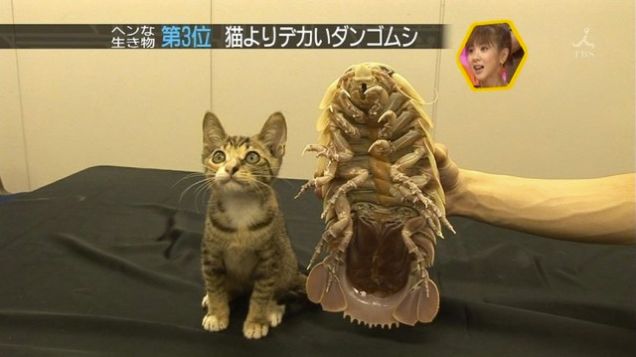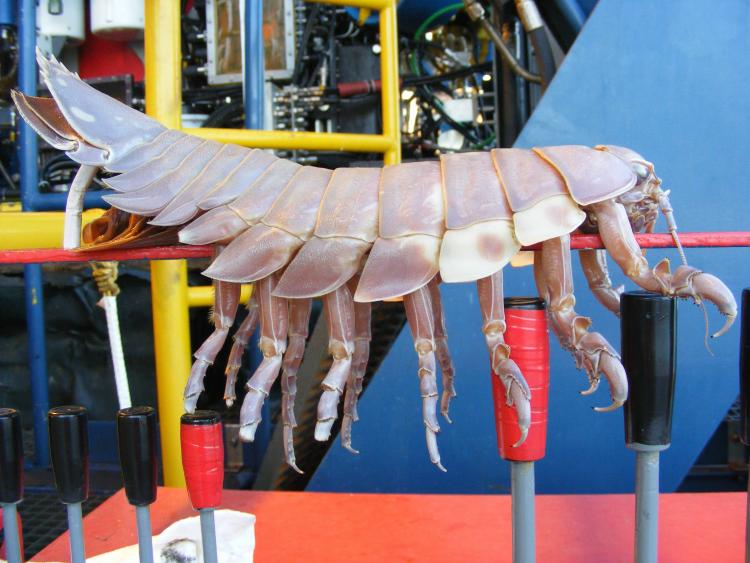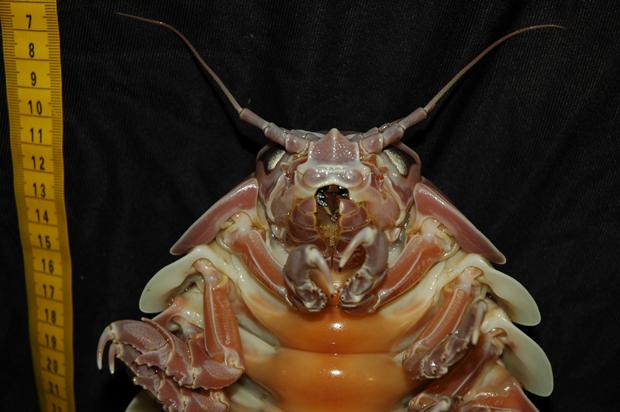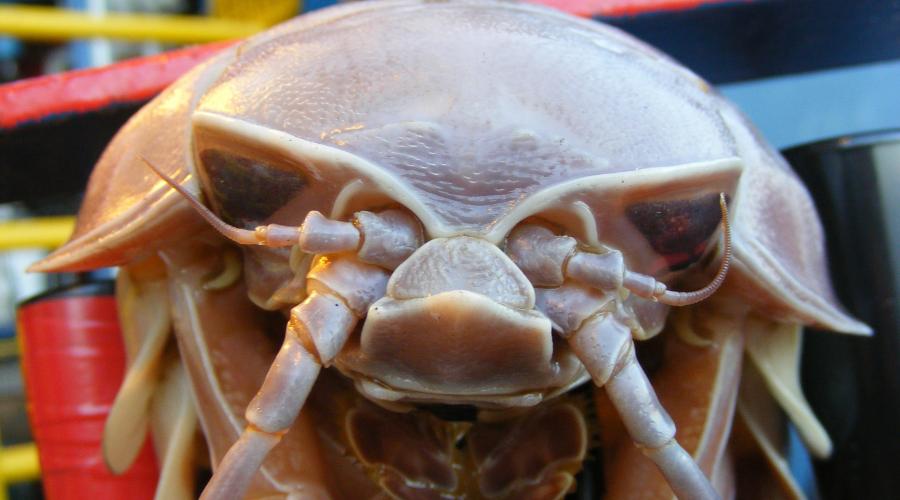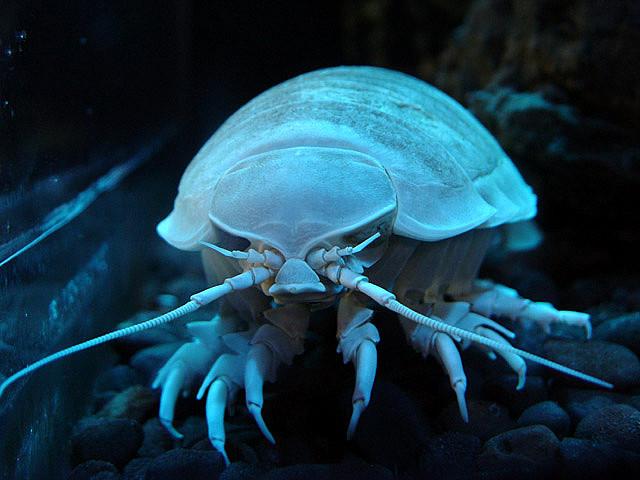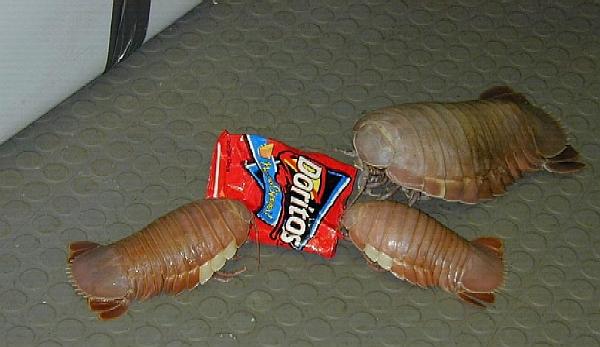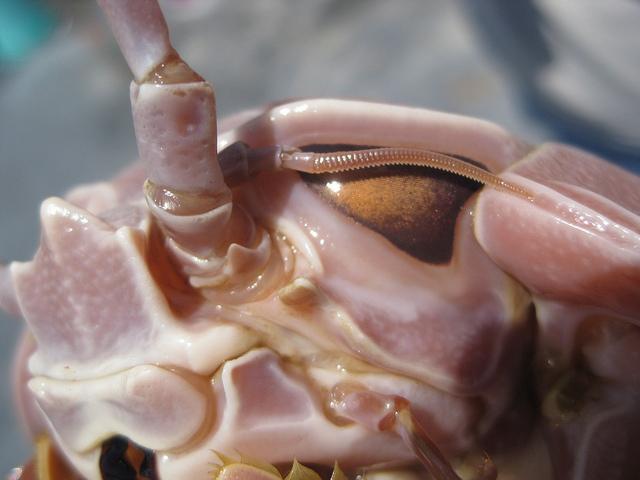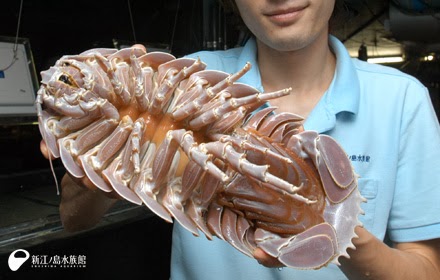Giant Isopods: The Woodlouse Of The Sea
You don’t get to see these weirdos in real life too often, not because they’re from an alien planet, but because they live in the deep and are rarely caught by fishermen.
Giant isopod is the generic name for around 20 large species of isopod in the genus Bathynomus. They are crustaceans and, as it appears, they are related to the woodlouse.
These pale lilac and brown armoured sea creatures inhabit cold, dark and deep waters and are thought to be fairly numerous in the Atlantic, Pacific and Indian oceans.
Giant isopods are generally of the species Bathynomus giganteus which is considered the largest of the isopods, but there are other species which are probably comparable in size. If any creature could be described as looking prehistoric, it’s the giant isopod.
If it ain’t broke…
We know from fossils that these creatures have indeed been in the oceans for more than 160 million years; that’s unimaginably long ago, in fact it’s before Pangaea (the first landmass on earth) split into the continents we all know and love today.
Interestingly, when individual Bathynomus were caught and studied from Australia, Mexico and India there were very few genetic differences at all. They appear to have remained in the same format without evolving for millions of years. I guess if you were as attractive as these guys you wouldn’t want to evolve either.
When giant isopods were first discovered in 1879, by French zoologist Alphonse Milne-Edwards, it was a surprise to everyone. Before that point most people considered the deepest parts of the ocean completely devoid of life, these chaps proved otherwise.
B. giganteus can grow to 37 cm in length and tip the scales at 1.7 kg (the equivalent of 3 cans of cider), however most Bathynomus species are much smaller, in the 1-5 cm range – B. giganteus are freaks.
Like woodlouse, these crustaceans have an exoskeleton made of overlapping sections, they can roll into a ball to protect themselves in the same manner as a woodlouse.
Giant isopods favour deep, dark and cold water, generally dwelling from 170 – 2,000 metres down.
What would a giant isopod eat for supper?
It is presumed that these solitary creatures are predominantly scavengers, eating bits of dead whale that they find on the ocean’s floor. It’s probable that they also prey on relatively sedentary animals like sea cucumbers, sponges and nematodes.
Living on the ocean floor means you can’t guarantee regular meals, and the isopod is designed with this in mind.
Isopods in captivity have survived for 5 years without any food, but when they are feeding, they gorge themselves to such an extent that moving becomes a problem.
“No 1!”
If you are wondering why someone would starve a creature for years don’t worry, it wasn’t torture, the isopod went on strike.
A giant isopod in Toba Aquarium, Japan called “No 1” was as normal as isopods can be, it would eat its meals happily until one day it just gave up. Keepers would still present No 1 with food daily, but it just wouldn’t eat. After five long years of no food at all it eventually died. An autopsy found no obvious reason why it had stopped feeding whilst the other isopods they had in captivity continued to live and feed happily.
No 1’s story was quite big in Japan who are particularly fond of giant ispopods. E.g.:
…and…
Isopods have incredibly slow metabolic rates to deal with long periods of famine, they rarely move unless they’ve decided to feed. Even if food is presented to them on a daily basis they will only actually eat a few times a year, but when they do they go to town and make mincemeat of whatever they’re given, using their four sets of jaws.
A creature as weird as the giant isopod has, of course, inspired many works of art. A band called Pocus White Face wrote the song featured in the video below as part of an entire album of songs dedicated to Bathynomus.
I can’t find the audio to most of the tunes, I think that might be for the best though:
It’s nice to read about a creature that has managed to stay pretty much exactly the same for millions of years, they’re not endangered and we don’t know a whole lot about them.
GO GIANT ISOPODS!

